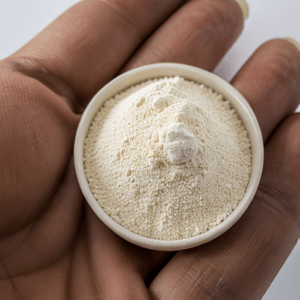Introduction

In the pharmaceutical industry, excipients play a crucial role in the formulation of both small and large molecule drugs. These inactive ingredients, often derived from the food industry, are essential for stabilizing active pharmaceutical ingredients (APIs), enhancing solubility, and improving bioavailability. However, for sensitive populations such as pediatric, elderly, and immunocompromised patients, the selection of excipients requires meticulous consideration to avoid adverse effects and ensure the safety and efficacy of medications.
The Importance of Excipient Selection
Excipients are not merely fillers; they significantly impact the stability, bioavailability, and overall effectiveness of a drug. According to a study published in the European Pharmaceutical Review, “Excipients are an integral part of pharmaceutical products and play an important role in the formulation development of both small and large molecule pharmaceuticals” [2]. This underscores the necessity of selecting appropriate excipients, especially for sensitive populations.
Challenges in Excipient Selection
Variability and Adverse Effects
One of the primary challenges in excipient selection is the variability in their use and concentration. A study highlighted in the National Center for Biotechnology Information (NCBI) found that “the average number of excipients utilized in biologic formulations was found to be half of those added to small molecule medicines, yet the distribution of 120 unique excipients among 230 medicines indicates high variability” [1]. This variability can lead to adverse effects, particularly in sensitive populations. For instance, even small amounts of allergens in a medication can induce serious anaphylactic reactions.
Stability and Degradation
Biologics and vaccines are inherently unstable and prone to degradation. The European Pharmaceutical Review notes that “biologics and vaccines are inherently unstable and prone to degradation by several physical and chemical degradation mechanisms” [2]. This instability necessitates the use of various excipients to stabilize these products during processing and storage.
Strategies for Excipient Selection
Functional Excipients
Functional excipients are increasingly being used to address the challenges posed by complex therapeutics. According to Pharmaceutical Manufacturing, “Functional excipients can be broadly grouped into four categories: solubility enhancers, release modifiers, suspending agents, and viscosity modifiers” [3]. These excipients not only stabilize the drug but also enhance its therapeutic effect by improving solubility and bioavailability.
Quality by Design (QbD)
The Quality by Design (QbD) approach is another strategy that can be employed in excipient selection. This approach involves understanding the biologic on the basis of its amino acid sequence and performing biochemical and biophysical characterization to identify the most suitable excipients. The European Pharmaceutical Review states, “Such rational approach to pre-formulation may also provide a basis for employing a QbD approach as the program moves forward through formulation development” [2].
Case Studies and Examples
Pediatric Formulations
In pediatric formulations, the selection of excipients is critical due to the unique physiological characteristics of children. For example, the use of sweeteners and flavoring agents can improve the palatability of medications, thereby enhancing compliance. However, these excipients must be carefully chosen to avoid potential adverse effects.
Elderly Populations
For elderly patients, excipients that enhance the solubility and bioavailability of drugs are particularly important. Many elderly patients have multiple comorbidities and are on several medications, making it essential to select excipients that do not interact adversely with other drugs.
Expert Insights
Randy Wald, a senior research fellow at Bend Research, emphasizes the importance of excipient functionality in drug formulation. He states, “Functional excipients form the foundation of most solid oral dosage forms and as such, careful consideration must be taken in their selection. The possible consequences of sub-optimized excipient selection can include reduced bioavailability, compromised stability, manufacturing complications, and increased chance of side effects” [5].
Pullquote
“Functional excipients form the foundation of most solid oral dosage forms and as such, careful consideration must be taken in their selection.” — Randy Wald, Senior Research Fellow at Bend Research
Conclusion
The selection of excipients for sensitive populations is a complex but crucial aspect of pharmaceutical formulation. By employing strategies such as the use of functional excipients and the Quality by Design approach, pharmaceutical companies can ensure the safety and efficacy of their products. As the industry continues to evolve, the importance of excipient selection will only grow, making it a key area of focus for researchers and manufacturers alike.
Cited Sources
- National Center for Biotechnology Information (NCBI)
- European Pharmaceutical Review
- Pharmaceutical Manufacturing
- U.S. Food and Drug Administration (FDA)
- Pharmaceutical Technology
Citations:
[1] https://www.ncbi.nlm.nih.gov/pmc/articles/PMC7316246/
[2] https://www.europeanpharmaceuticalreview.com/article/24136/excipient-selection-biologics-vaccines-formulation-development/
[3] https://www.pharmamanufacturing.com/sector/small-molecule/article/33017018/excipient-based-strategies-to-harness-complex-therapeutics
[4] https://www.fda.gov/media/72260/download
[5] https://www.pharmtech.com/view/key-considerations-excipients-selection-solid-dosage-forms

